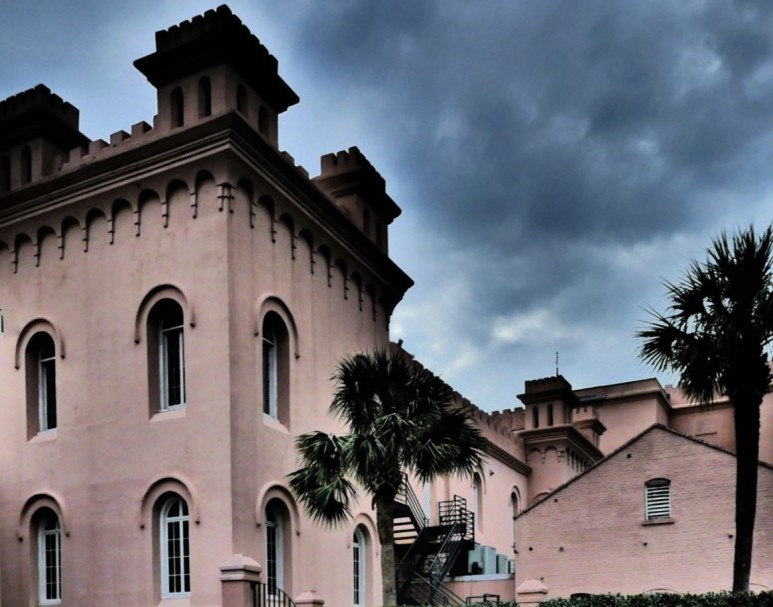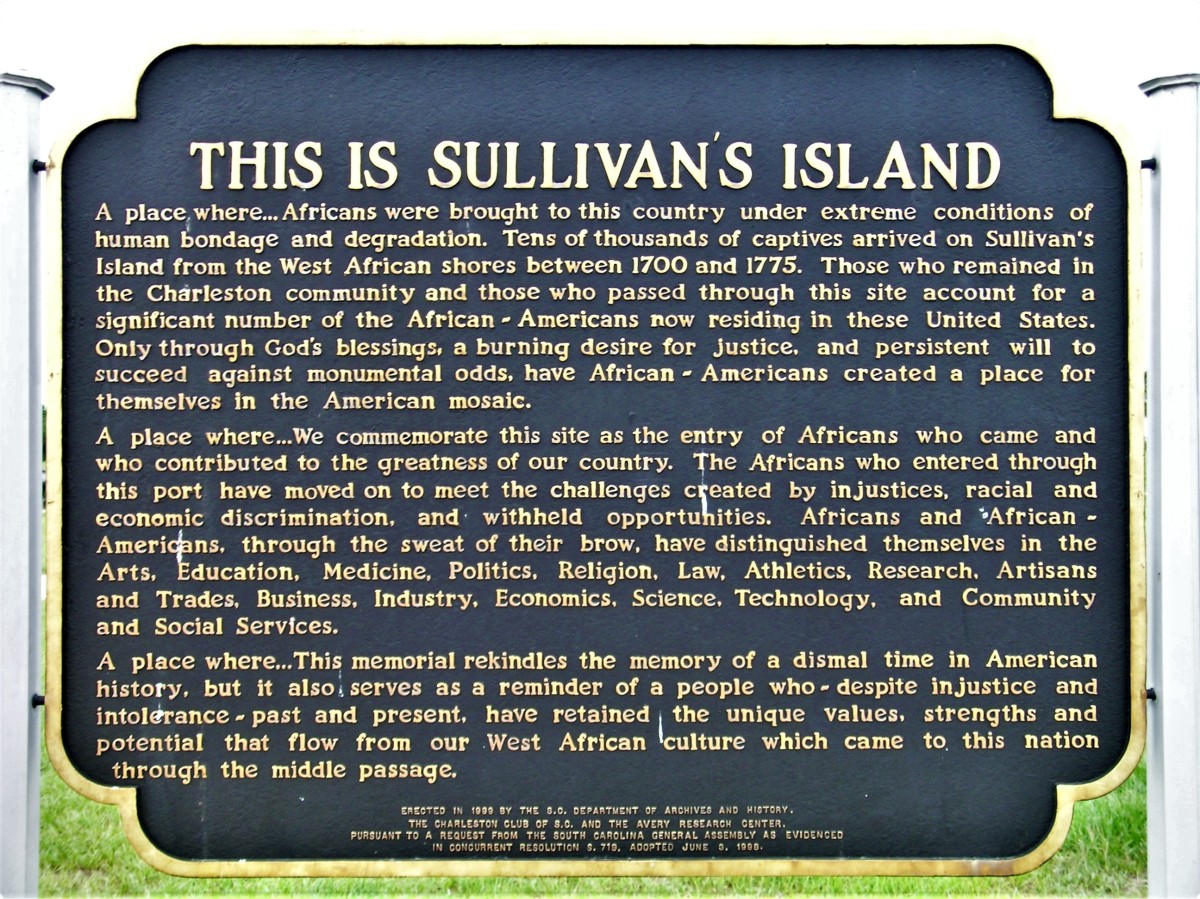Charleston, South Carolina has a picture postcard personality with an imperfect and unpleasant past–mostly because Charleston was built on the backs of slaves for nearly 200 years, with nearly 1.5 million slaves passing through Charleston Harbor until the 13th Amendment to the Constitution abolished slavery in 1865–yet the appeal and beauty of Charleston cannot be denied.
A tour of Fort Moultrie on Sullivan’s Island offers a historical narrative that addresses the highs and lows of the Low Country from a military perspective.

The earliest protection of Charleston’s harbor came from its outlying shoals, forcing ship traffic from the south, and across Sullivan’s Fort.

Early defense of the harbor relied on a sixteen-foot thick sandwich between two slices of palmetto log-walls that British bombardments found impossible to penetrate. In June 1776, nine British warships were driven off under a hail of smooth-bore cannon fire during the Revolutionary War.
Consequently, Charleston was saved and the fort was renamed in honor of its commander, William Moultrie (1730-1805).

In 1794, with the addition of Vermont and Kentucky to the Union, a new 15 star/15 stripe flag flew beyond the sally port…

over a newly-styled defense system, with walls of earth and timber rising 17 feet above the shoreline.


In 1804, a hurricane destroyed the fort, calling for Congress to appropriate funds for a Second American System of coastal fortifications, including an 1809 rebuild of Fort Moultrie fortified with brick,

and the addition of Fort Sumter to its south.

South Carolina’s secession from the Union in 1860 provoked the Civil War. Moultrie was quickly abandoned in favor of Sumter’s stronger defense system. However, the Confederates bombed Sumter into submission three months later, gaining control of the harbor–and successfully defended against a Federal fleet of Ironclads with a string of 32-pounders lined across its battlements–until Charleston surrendered in 1865.

Fort Moultrie continued to modernize, and sustained to protect the southern coastline through both World Wars…

…by coordinating all harbor defenses through its Harbor Entrance Control post,

until its decommission in 1947.

Sullivan’s Island was also the first line of defense against virulent disease, providing “pest houses” for in-transit African slaves between 1700 and 1775. who were processed and quarantined prior to dispatch to the Slave Mart in Charleston,

suggesting a crude and culpable counterpart to white immigration at Ellis Island.
The Old Slave Mart–now converted to a museum–tells the painful story of America’s darkest days in a straightforward way…

offering a self-guided tour through an unimaginable time when freedom was confiscated for a price,

and families were ripped apart,

so America could prosper.

Yet, such a beautiful city has been wrought in the wake of such misery.










But lest we forget:



Informative and loving the photos as well! Please do check out our latest post https://wp.me/p92159-B Thank you! 🌸
LikeLiked by 1 person
Thank you. Will do!
LikeLike
I need to explore your part of the world in greater detail. I’ve been to Indonesia 30 years ago, but nevet visited Borneo. Your post reminds me how much I’ve missed this region of the world.
LikeLike
I wish this could be our new home. Time will tell.
LikeLiked by 1 person